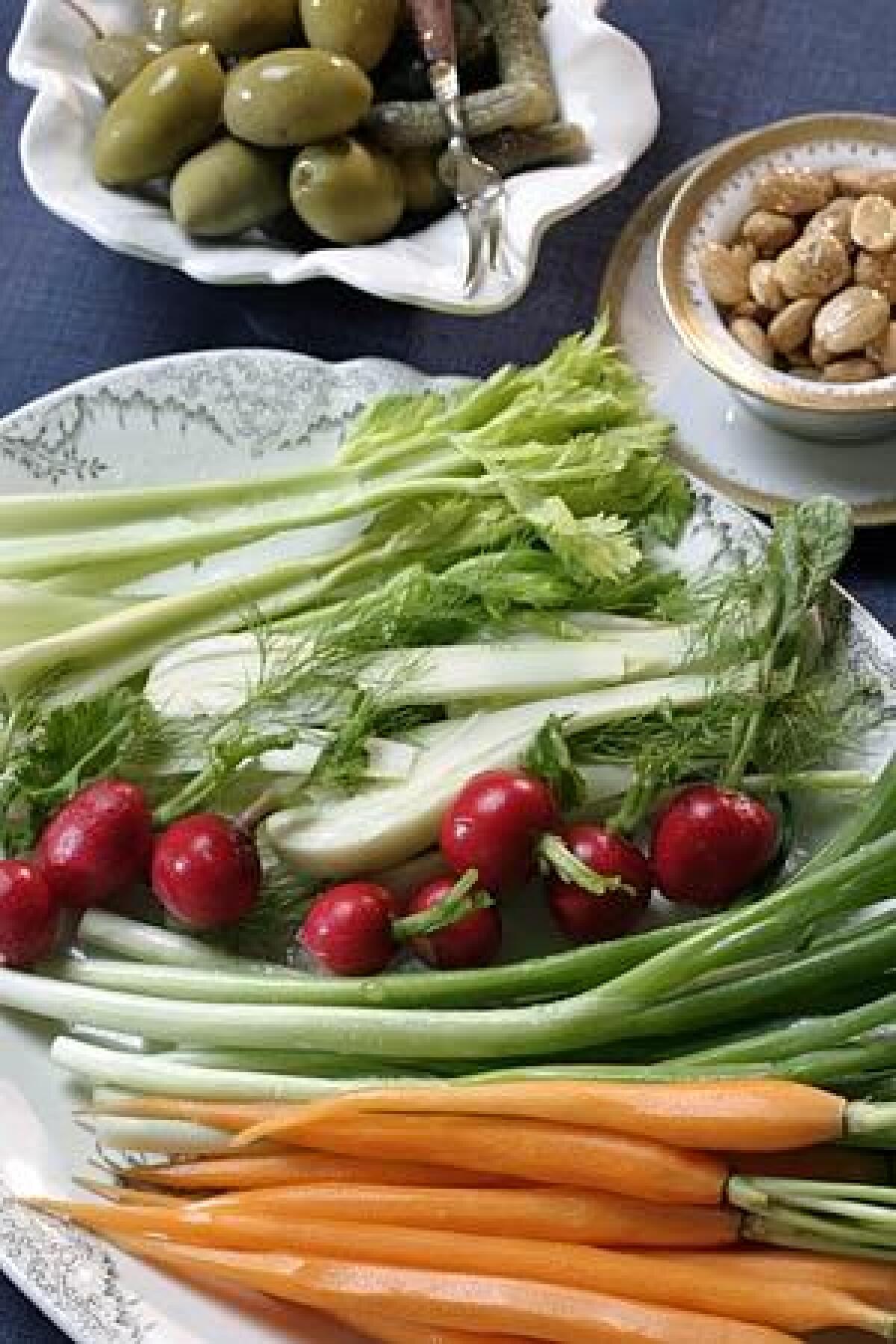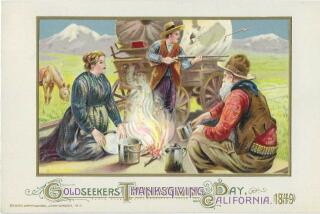Recipe: Relish tray

Total time: 30 minutes
What do you face at Thanksgiving? A table overflowing with richness -- roast turkey, a brimming gravy boat, buttery mashed or scalloped potatoes, mounds of stuffing studded with sausage -- and often sugary side dishes as well, such as sweet potatoes and the eternal cranberry sauce. No wonder they call it a ŌĆ£groaning board.ŌĆØ
So you need a break, something fresh and crisp to play off all that, and thatŌĆÖs why we have the relish tray.
The relish tray is not a salad and never has a dressing. (We donŌĆÖt need any more richness at this point, thank you, so hold the vinaigrette -- and the aioli too; it isnŌĆÖt crudites either.)
ItŌĆÖs just crisp raw vegetables and pickles: carrot sticks, celery sticks, radishes, green onions and crunchy cornichons. And the crisper the better.
The tradition doesnŌĆÖt date back to Plymouth Rock, but itŌĆÖs been with us for a good long while. It became widespread in the late 19th century when Southern California vegetables were first shipped around the country in air-conditioned railway cars.
Before that time, many destinations back East didnŌĆÖt have much choice of fresh vegetables in November.
Celery played an important role on the tray because it was a special occasion treat. Before self-blanching varieties were developed in the 20th century, celery was a labor-intensive product. The stalks had to be blanched by covering them with dirt as they grew, the same way that endive is blanched, and for the same reason -- traditional celery varieties were too bitter to eat if the stalks were exposed to light and turned green.
Hard as it may be to imagine now, celery was once so upscale that special dishes were designed for displaying and serving it. And at Thanksgiving, people were willing to splurge on this luxury food.
Being located in the nationŌĆÖs vegetable garden, Southern Californians became particularly fond of the relish tray. From the beginning of the 20th century until well into the 1960s, more or less condensed versions automatically appeared on the table at many Southland restaurants. Like the custom of serving salad before the meal (which shocked Easterners who served it at the end, in the French manner), it was part of our patriotic infatuation with local produce.
The exact makeup of the relish tray is a matter of family tradition, like everything else at the Thanksgiving meal, so olives and nuts may appear on the tray or hover in the vicinity. TheyŌĆÖre not exactly crisp, but they play their own part in giving a bit of pungent contrast as you move between the drumstick and the sweet potatoes.
Tradition is an additive sort of thing, so you can update the tray by adding crisp, fragrant fennel root and crunchy jicama. Instead of California almonds, you could serve flavorful Spanish Marconas and meaty Cerignola olives or dainty French Picholines instead of cocktail olives.
Making up a relish tray is about as simple as can be. Peel the carrots and remove the strings from the celery (by gripping the end of a stalk between your thumb and a paring knife and pulling them out). Cut the carrots, celery and fennel root into convenient lengths, no more than 4 inches long, and quarter them (or slice into julienne, if thatŌĆÖs your taste). Cut the radishes as for radish roses, if you like, and put all the vegetables into ice water for at least 10 minutes to crisp them before serving.
Then peel and cut the jicama root (well, maybe half a root, unless you have a lot of guests) into finger-size sticks and arrange all the vegetables on a plate, along with pickles, olives and almonds.
More to Read
Eat your way across L.A.
Get our weekly Tasting Notes newsletter for reviews, news and more.
You may occasionally receive promotional content from the Los Angeles Times.










